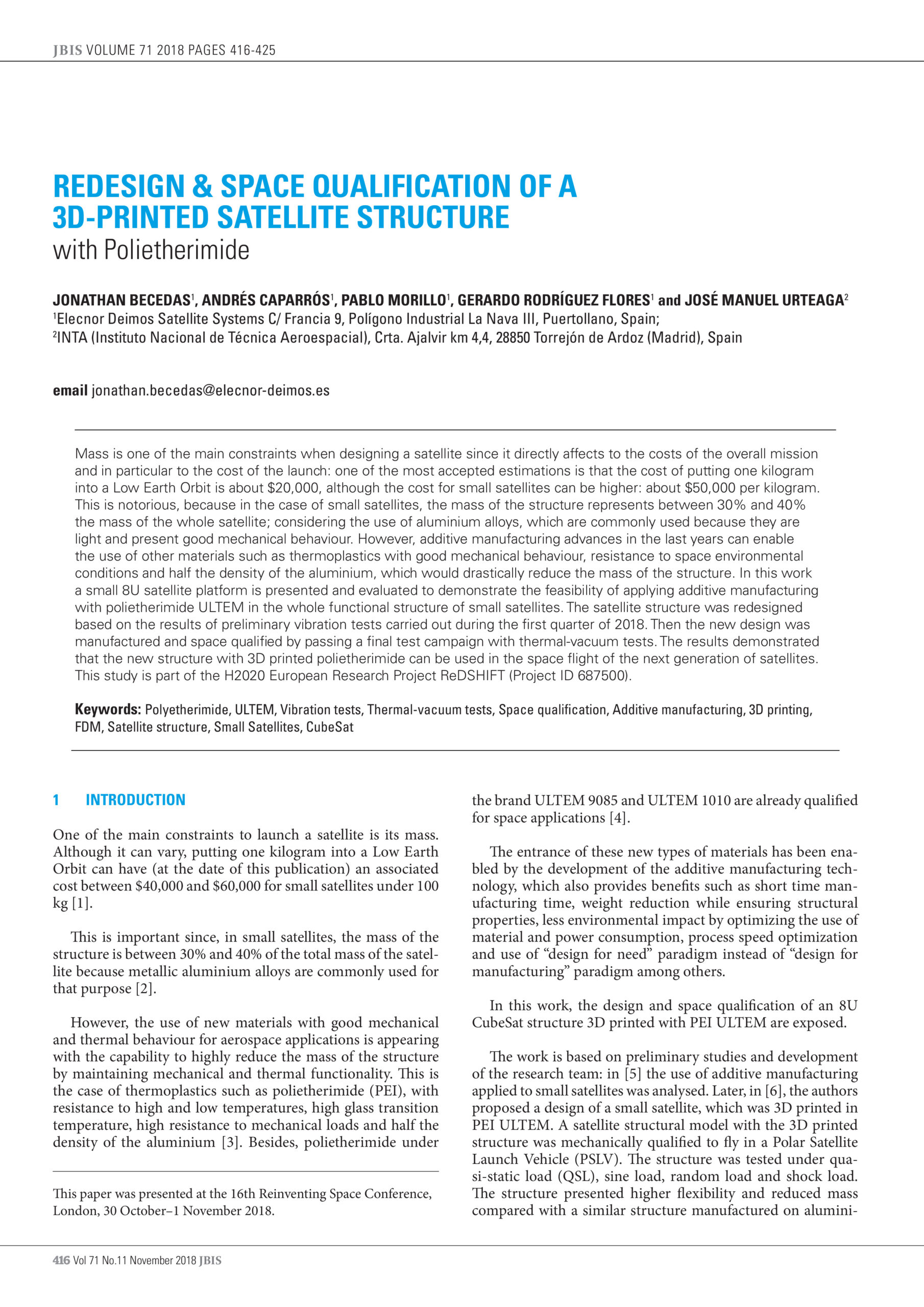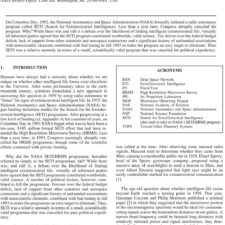Redesign & Space Qualification of a 3D-printed Satellite Structure with Polietherimide
£5.00
J. Becedas et al. (2018), JBIS, 71, pp.416-425
Refcode: 2018.71.416
Keywords: Polyetherimide, ULTEM, Vibration tests, Thermal-vacuum tests, Space qualification, Additive manufacturing, 3D printing, FDM, Satellite structure, Small Satellites, CubeSat
Abstract:
Mass is one of the main constraints when designing a satellite since it directly affects to the costs of the overall mission and in particular to the cost of the launch: one of the most accepted estimations is that the cost of putting one kilogram into a Low Earth Orbit is about $20,000, although the cost for small satellites can be higher: about $50,000 per kilogram. This is notorious, because in the case of small satellites, the mass of the structure represents between 30% and 40% the mass of the whole satellite; considering the use of aluminium alloys, which are commonly used because they are light and present good mechanical behaviour. However, additive manufacturing advances in the last years can enable the use of other materials such as thermoplastics with good mechanical behaviour, resistance to space environmental conditions and half the density of the aluminium, which would drastically reduce the mass of the structure. In this work a small 8U satellite platform is presented and evaluated to demonstrate the feasibility of applying additive manufacturing with polietherimide ULTEM in the whole functional structure of small satellites. The satellite structure was redesigned based on the results of preliminary vibration tests carried out during the first quarter of 2018. Then the new design was manufactured and space qualified by passing a final test campaign with thermal-vacuum tests. The results demonstrated that the new structure with 3D printed polietherimide can be used in the space flight of the next generation of satellites. This study is part of the H2020 European Research Project ReDSHIFT (Project ID 687500).





